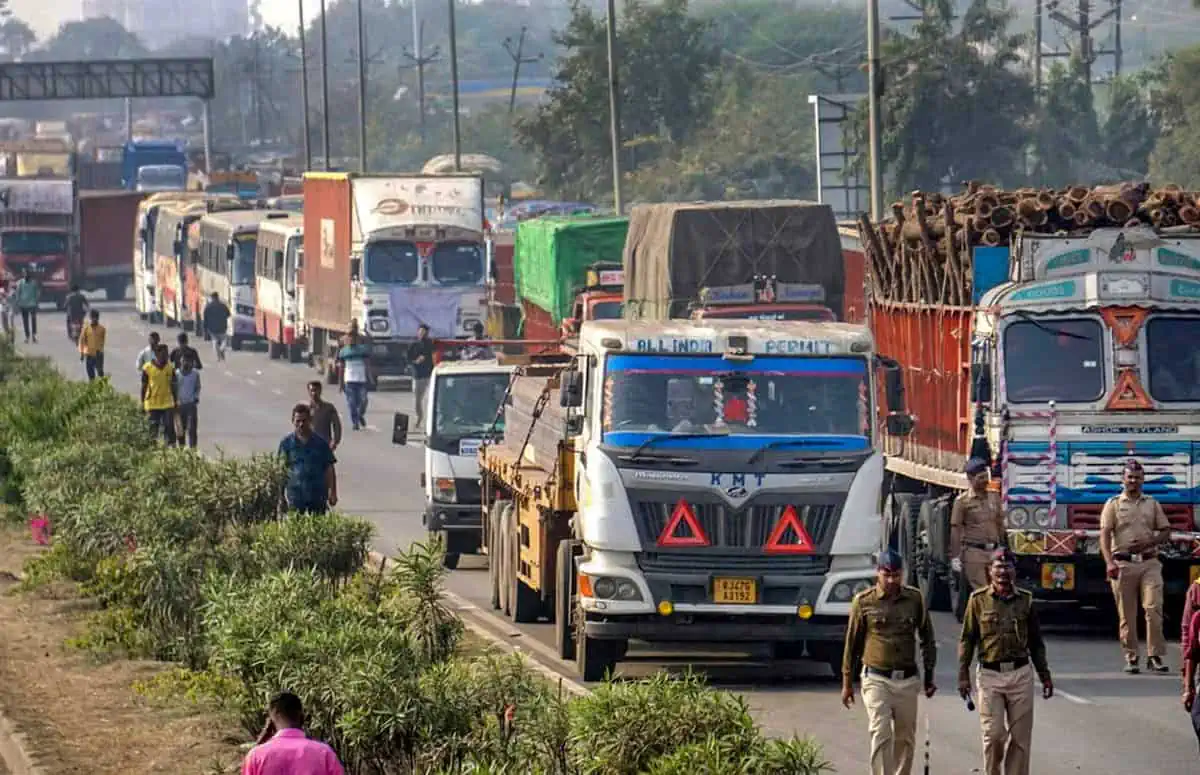
The Center states that discussions will conclude prior to utilizing the BNS, taking into account the concerns raised by the truck drivers.
 The “hit and run” provision of the Bharatiya Nyaya Sanhita, which seeks to replace the Indian Penal Code, would only take effect after discussions with the All India Motor Transport Congress, the Indian government announced in a press statement on January 2. It’s a significant advancement.
The “hit and run” provision of the Bharatiya Nyaya Sanhita, which seeks to replace the Indian Penal Code, would only take effect after discussions with the All India Motor Transport Congress, the Indian government announced in a press statement on January 2. It’s a significant advancement.
President Draupadi Murmu officially signed the three new criminal code regulations—passed by Parliament on December 25—into law. The Indian Nyaya Sanhita, Indian Nagarik Suraksha Sanhita, and Indian Sakshya Sanhita will take the place of the Indian Evidence Act of 1872, the Indian Criminal Procedure Code, and the Indian Penal Code.
Section 106(2), also known as the “hit-and-run clause,” has garnered significant momentum despite ongoing refinements. According to this passage, a driver who kills another person by driving recklessly or carelessly and then flees the scene could face fines or, in the worst instance, a ten-year jail sentence. To express their disapproval of the same clause and urge its removal by the federal government, bus, truck, and taxi drivers nationwide organized a walkout. They claimed that they would unfairly suffer harassment as a result of this clause.
It should be mentioned that drivers found guilty of reckless or careless driving infractions risk terms of up to two years in jail under Section 304A of the IPC (causing death by carelessness).
In light of this, a press release from the government said that it had a thorough conversation with the members of the All India Motor Transport Congress. In addition, the government has made it quite clear that these rules remain in effect and that any decision to employ the hit-and-run clause in particular would require consultation. In fact, the government wants to see all drivers go back to work; they have said as much.
To simplify matters, the statement states: “The Government of India has taken cognizance of the concerns raised by truckers regarding the provision of 10 years imprisonment and fine under Section 106 (2) of the Bharatiya Nyay Sanhita and has held a thorough discussion with the representatives of the All India Motor Transport Congress today.” The administration emphasizes how important it is to remember that these new laws and rules are still in the works. It is noteworthy that Section 106(2) of the Bharatiya Nyay Sanhita Act may only be used after consulting the All India Motor Transport Congress. All Indian Motor Transport Congress drivers and other drivers alike have to return to work.
Good information Thanks you